A few months ago we were arriving in Chile. Our very first stop was the capital, Santiago de Chile. It was the second capital we were visiting after Buenos Aires. To explore it better, we stayed right in the centre. Our Airbnb hosts were the most lovely people. They gave us so many advice on what to do and where to eat!
One of the first thing you notice when arriving in the city, is the smog. The level of pollution in Santiago is so high that practically at all time, there is a big grey cloud of smog over the city. If you were hoping to see the Andes surrounding the city, cross your finger because the clear days that allow that are not many.
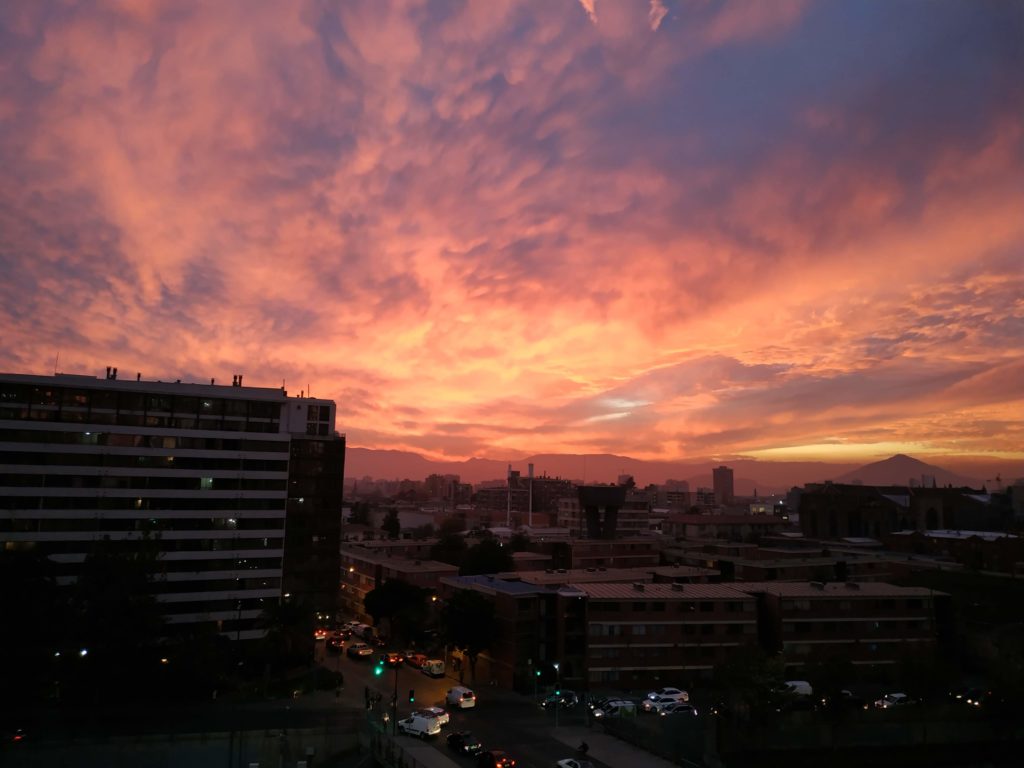
Visit Santiago with a free tour
On our first day in Santiago, we decided to take it easy as we were just getting off a 20-hour bus ride. Since we needed to our legs, we joined one of the many free tours the city has to offer. We didn’t want to visit the main touristic sites with a tour since it is usually really easy to find information about those and we prefer to visit them at our own pace. But we found a really cool tour, the « offbeat » one. Our guide presented the different neighbourhoods of the city: from the rich and historic one to the poorer just across the river. People working for the upper classes lived there and, until the construction of a bridge, risked their life every day to get to work.
We then went to the Central and La Vega markets. In each of them, he introduced some people working there and advised us on what to eat. He also made us tried the famous sopaipilla, a fried pastry that you eat with some salsa, for breakfast or as a snack.
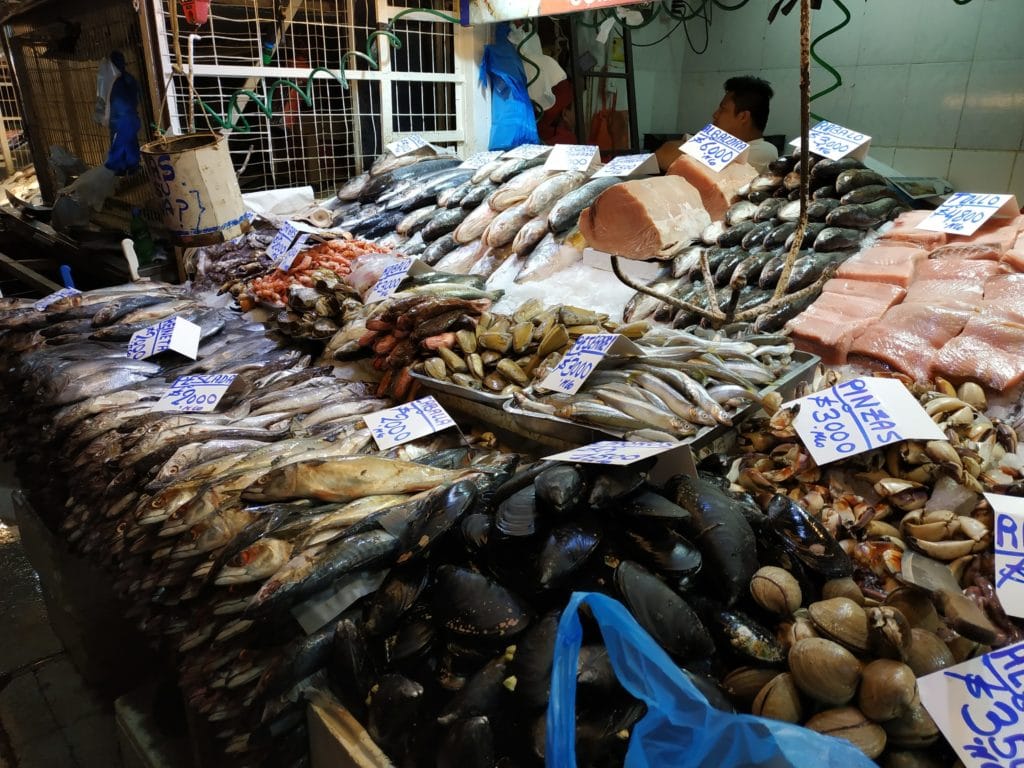
To finish the tour, we went to the cemetery. It is really big (like 17 football fields) and have quite some amazing mausoleums. The more you walk in the cemetery the bigger the mausoleums become. We arrived until Salvador Allende’s grave where our guide gave us a history lesson about his presidency and the dictatorship that followed. It was not hard to understand that this part of history is still a really sensitive subject for a lot of Chileans.
The tour was really interesting and we would really advise to take one of the many free tours to discover the city a little better. Moreover, the guides always have some really good advice about food. Thanks to ours, we went back to the central market for lunch and enjoyed the really nice sea food there. Among other things we ate caldillo de congrio, a fish soup made famous by a poem of Pablo Neruda.
Santiago historical centre
Since our tour was over just around lunch time, it gave us all afternoon to visit the historical city centre. We started our visit in Plaza de Armas, the heart of the city. This square is always full of people walking around and street artists. From there, you can visit the cathedral and the national history museum. We didn’t manage to visit this one but, if you have time to go, we heard it is nice, plus it is free! Remember only that all the museums are closed on Mondays, so plan your visits ahead!
Visit some really nice museums
We walked until La Moneda, where the president has its office. In 1973 the army lead by the general Augusto Pinochet, supported by the USA, assaulted the palace to take the power. The rightful president Salvador Allende refused to leave the country and found refuge in its office. The 11 of September the palace was bombed by the army and Allende committed suicide. So the dictatorship began, lasting until 1990. You can still see the bullets’ holes from the coup.
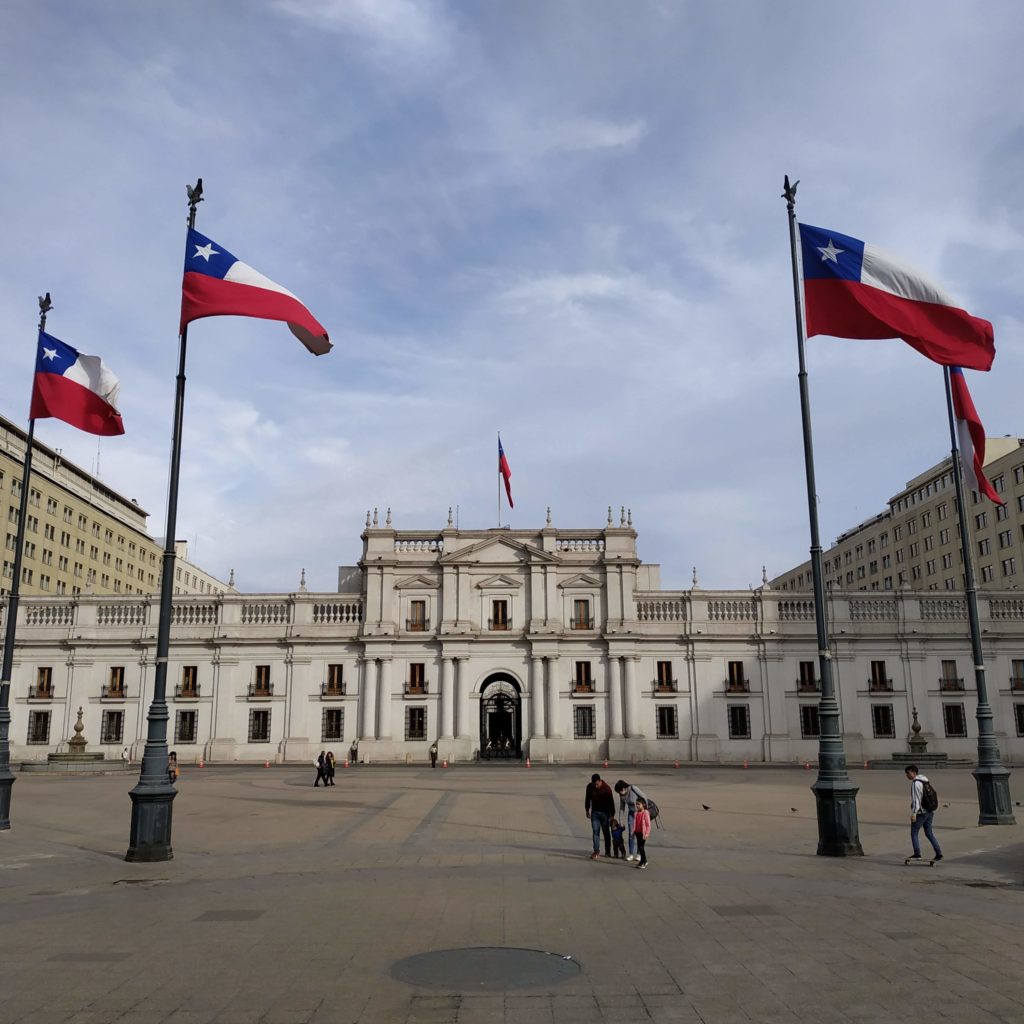
It is possible to visit it although you have to book in advance. Since we didn’t book anything, we just went to the centro cultural de la Moneda, just under the building. There you can see some free temporary exhibitions. When we came, there was a photo exhibition about Santiago which was quite interesting.
Since our visits were evolving a lot around the contemporary history of Chile, we decided to finish our day with the museo de la memoria y de los derechos humanos. The museum is quite intense as it explain the dark years of Pinochet’s dictatorship. You can see a lot of testimonies of this period thanks to newspapers, pictures, objects, recording, etc. It includes also interviews to people that were tortured during the dictatorship. As hard as it is, if you are interested in the history of Chile, we would really recommend to visit that museum.
Walk in a park: the Cerro Santa Lucia
We decided to make our second day in Santiago less intense. We started the day by visiting the Cerro Santa Lucia. Originally, our plan was to do another free tour to discover the Cerro, but we got confused with the time and arrived one hour early (we explain why at the end of the post). Since we didn’t want to wait one hour doing nothing and we were already there, we ended up visiting the cerro on our own. It is a really nice park, with many stairs and fountains. From the top, you can get a nice view on the city.
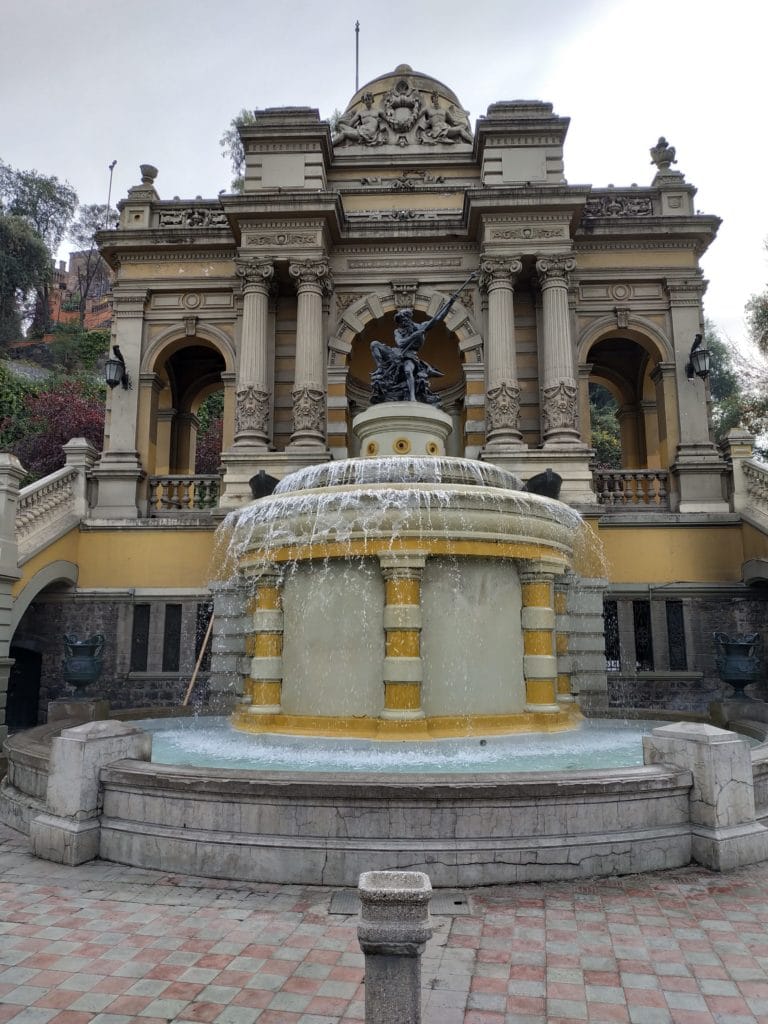
Museo de arte precolombino
After this nice stroll, we went to discover more about the ancient history of the continent and entered the museo de arte precolombino. It is really nice and big and you can easily spend a couple of hours there. There are collections of precolombian art from all Latin America and there are also the oldest mommies in the world.
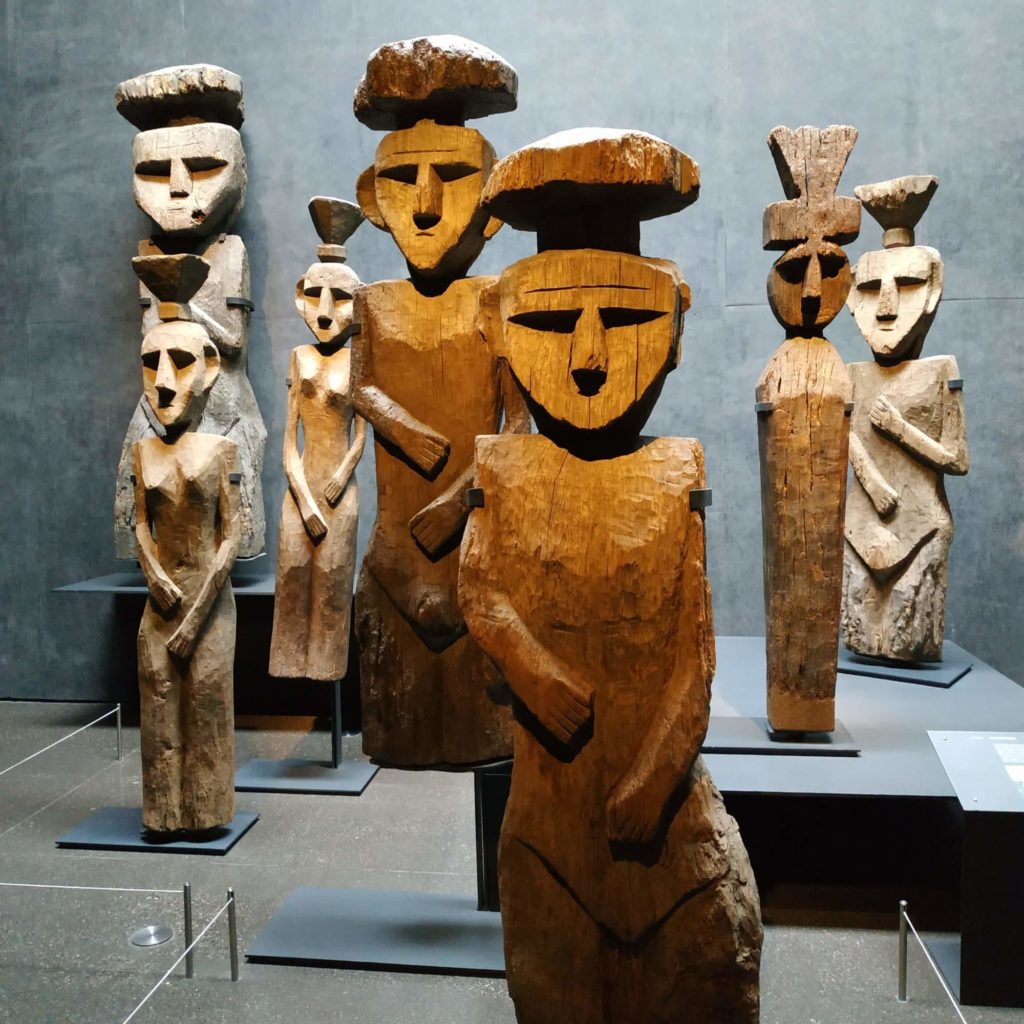
Climb the Cerro San Cristobal
To start our third day in the capital, we wanted to do some exercise. What better for that than to walk up the Cerro San Cristobal? Of course, you could get the funicular or the car to arrive until the top, but where is the fun in that! This Cerro is the highest hill of the city. So high that you pass above the pollution cloud and get to enjoy the sun. But then, it is hard to see the city through the smog so don’t expect amazing pictures. Up the Cerro, it is the perfect spot to try the famous mote con huesillos. It is one of the very few culinary things that Chileans recommended us.
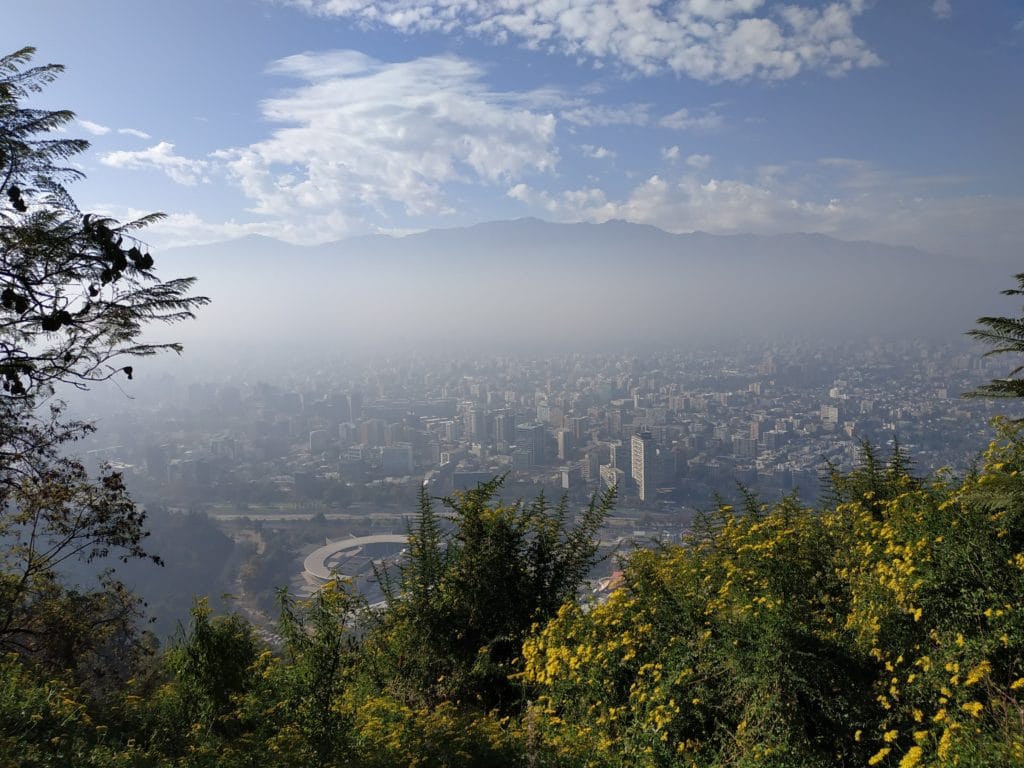
Museo la Chascona: house of Pablo Neruda
Once down the Cerro San Cristobal, if you like poetry, we can recommend you to visit one of the three houses of Pablo Neruda, la Chascona. As a matter of fact, even if you are not very familiar with this poet, the visit is really worth it. First, the house is quite original and you will learn where the name of the house comes from (no spoiler!). It also gives you another point of view regarding the contemporary history of Chile as Pablo Neruda was very engaged in politics.
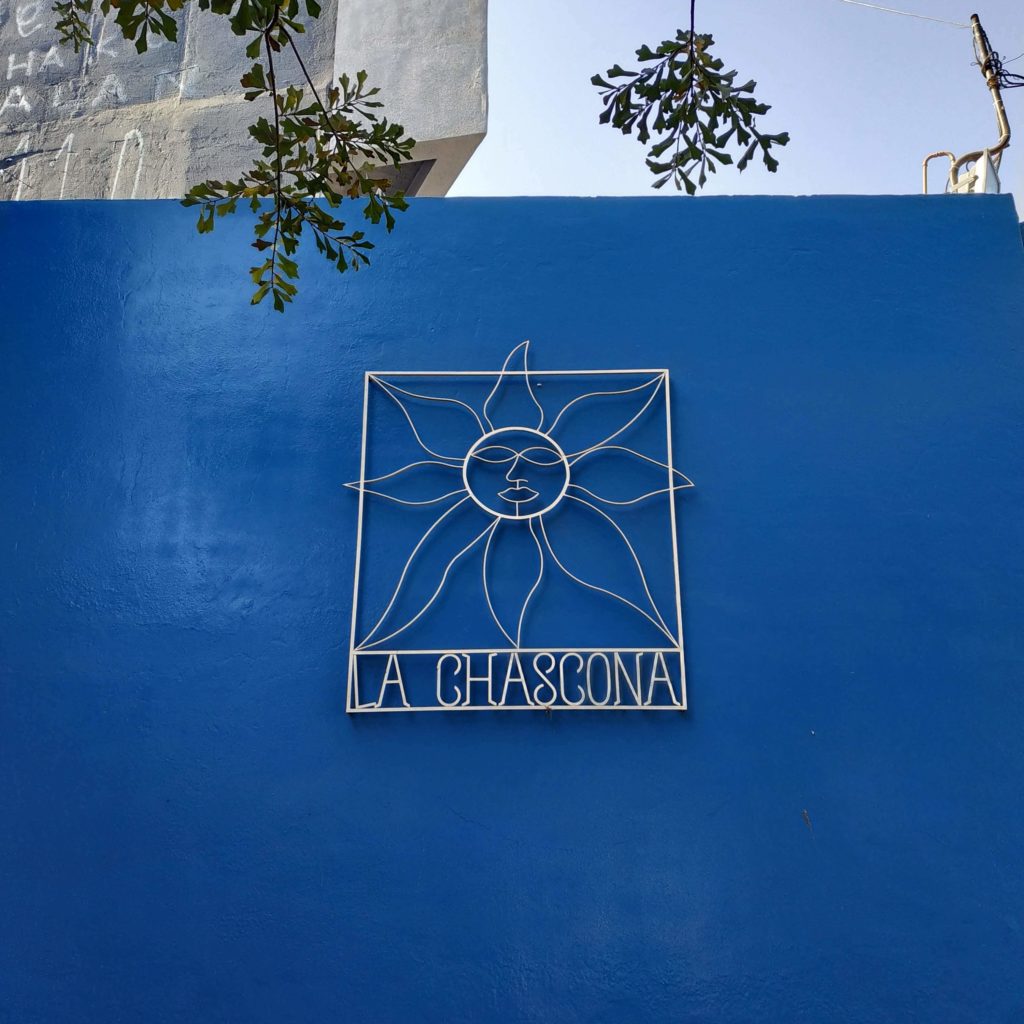
Museo Violetta Parra
In the same neighbourhood, you can also find the museo Violetta Parra. She was a very famous singer and if you want to discover more about Chilean music, it is the perfect place to go. Moreover, they organise a lot of concert inside the museum. Unfortunately, we didn’t go to this museum as it turned out to be closed when we passed in front. But it has been recommended to us by a lot of Chileans.
Go for a day trip to Valparaiso
After spending three days exploring Santiago, we decided to explore a bit the surroundings as well. From the city centre, it is easy to take a bus to Valparaiso. It is a coastal city, two hours away from Santiago. A lot of people go there for a day trip but we have been told that the night life is quite active during the weekend so it can be also really nice to stay there for a night.
Discover the street art
Valparaiso is famous for its street art. If you go for a walk on top of the hills, you will see quite a lot of them, one nicer that the other. As we are big fans of street art but didn’t have much time, we decided to go for the graffiti free tour. Our guide explained a little bit the history of the city before showing us one piece of art after the other, all while explaining their meaning. We would never have realised by ourselves how socially and politically engaged some graffiti are. A lot of them had strong political messages, quite often supporting the indigenous communities.
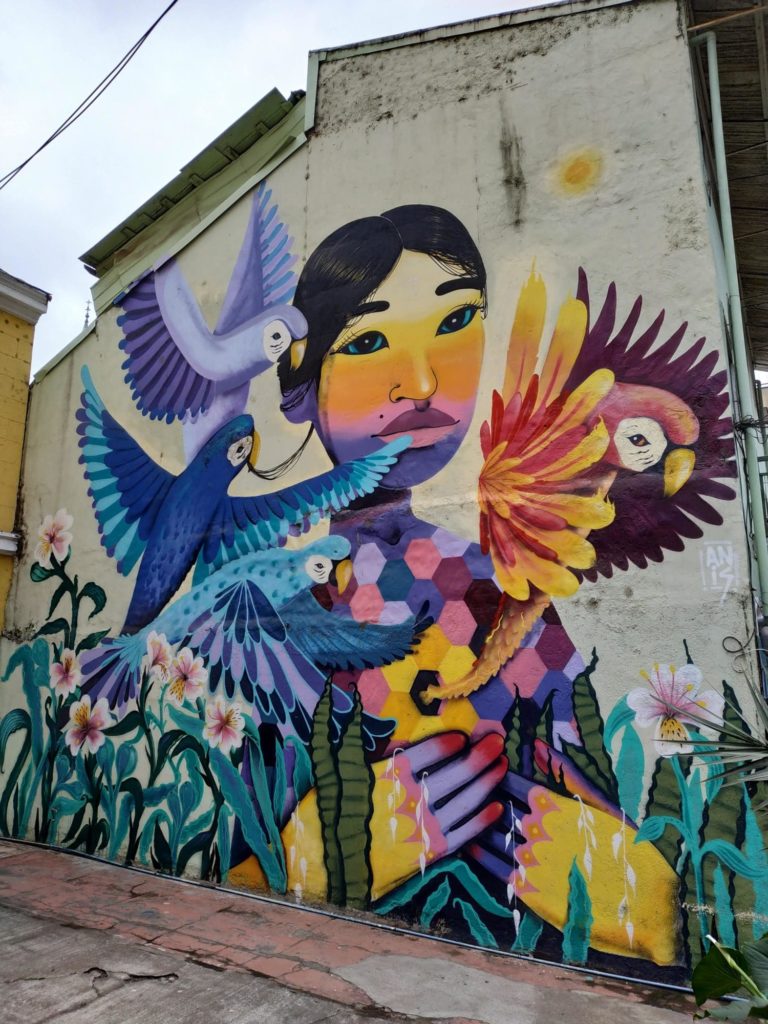
During the tour, you will also get to take one of the many funiculars of the city to go up hills. With our group, we took one of the oldest one. It really felt like a trip back in time.
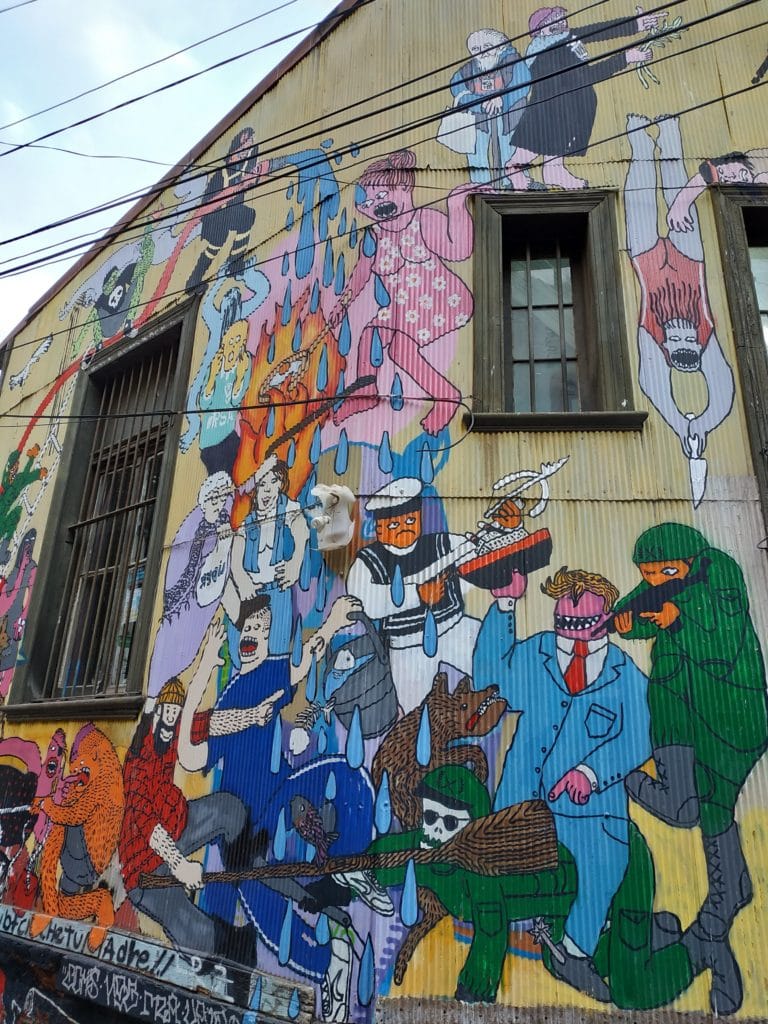
Visit la Sebastiana: other house of Pablo Neruda
In Valparaiso, you can also find the second house of Pablo Neruda. Of course, we also went to visit this one. Situated on top of a hill, you get a really nice view on the sea (like all of Pablo Neruda’s houses). From an historical point of view, you won’t learn much more than from the visit to the Chascona. But once again, the house is original and really worth the visit.
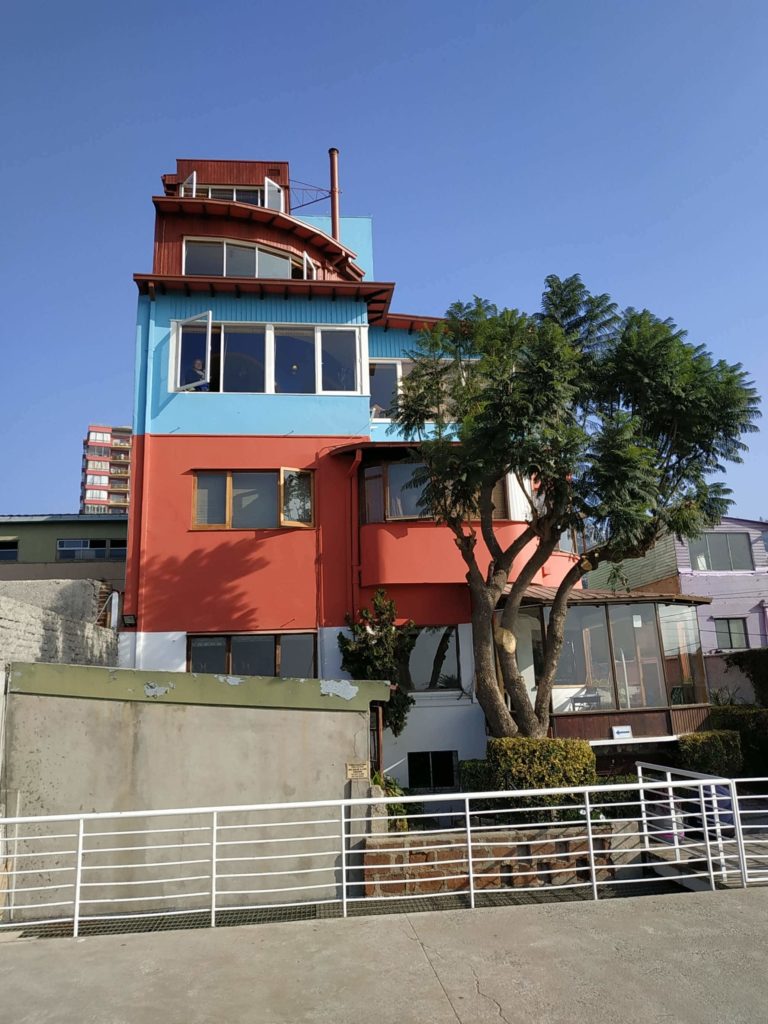
Go to Isla Negra to see the last house of Pablo Neruda
The city of Isla Negra, situated between Santiago and Valparaiso, is not of much interest. However the trip is worth to go and visit the last house of Pablo Neruda. It is the one we visited last and the most impressive. Pablo Neruda and his wife are buried there. This house is the biggest and also the one where you witness the most his love for the sea.
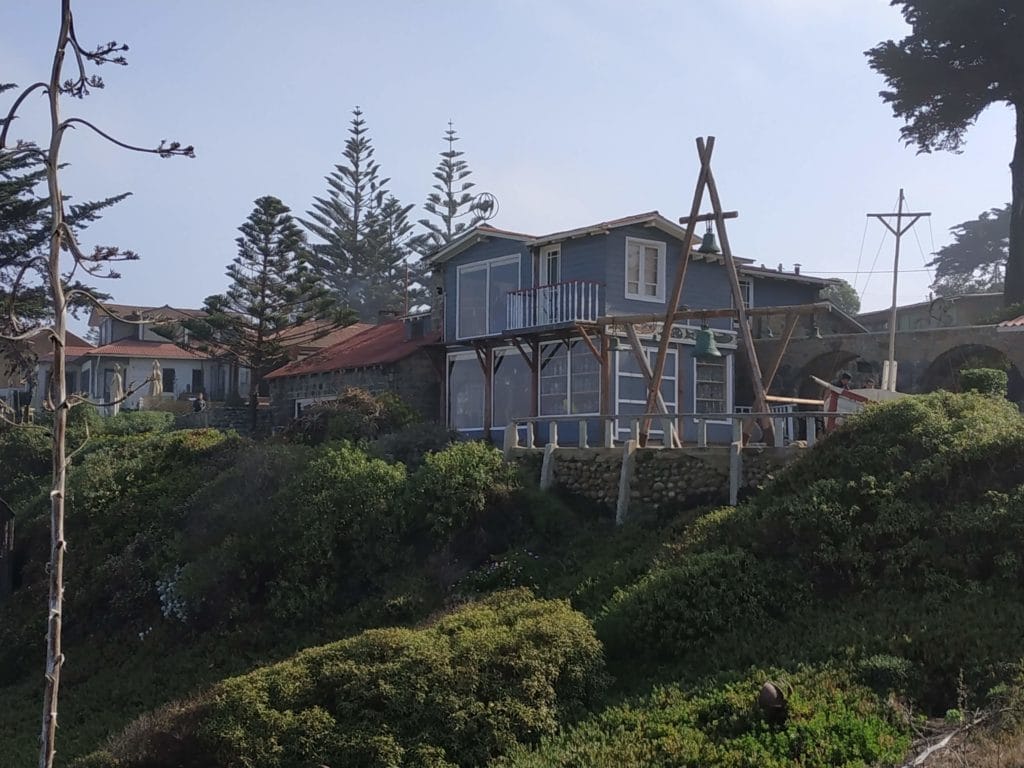
Time confusion
Do you want to know how we got confused with the time on our second day? It’s easy : Chile is a country that doesn’t want to do like everybody else, so they decided to change the hour on a different day than all the other countries. And since they can’t decide exactly when they want to change it, every other year they try something new. The consequence is that our phones stayed on the official hour change and were not showing the actual Chilean time. The plane that brought us to Easter island the week after had the same problem and many people got confused. The fun fact is that is took us a good 24 hours in Chile before we realised that…
To not miss any of our adventures, subscribe to our monthly newsletter!
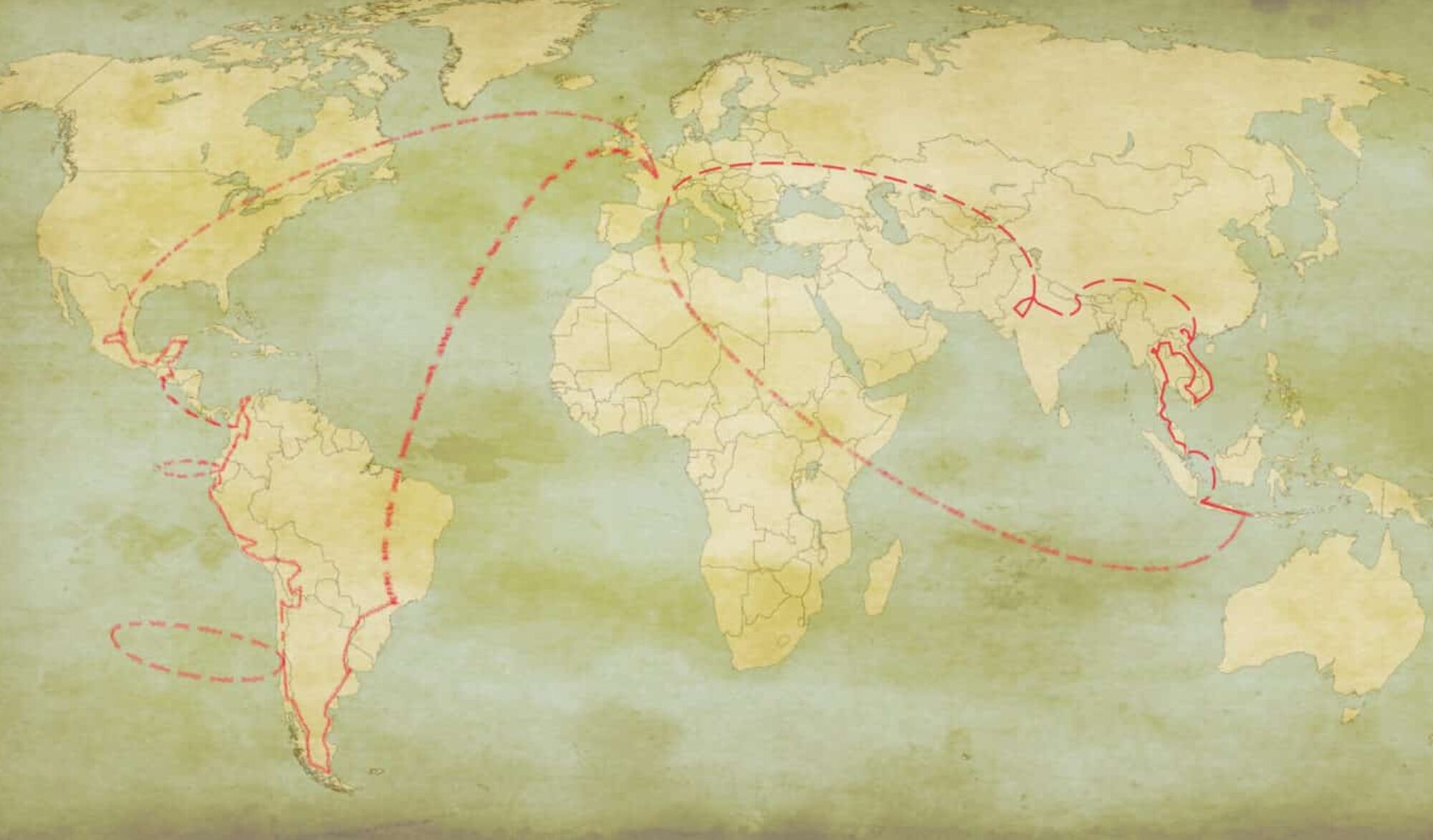
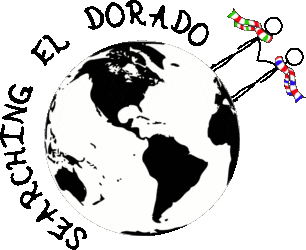
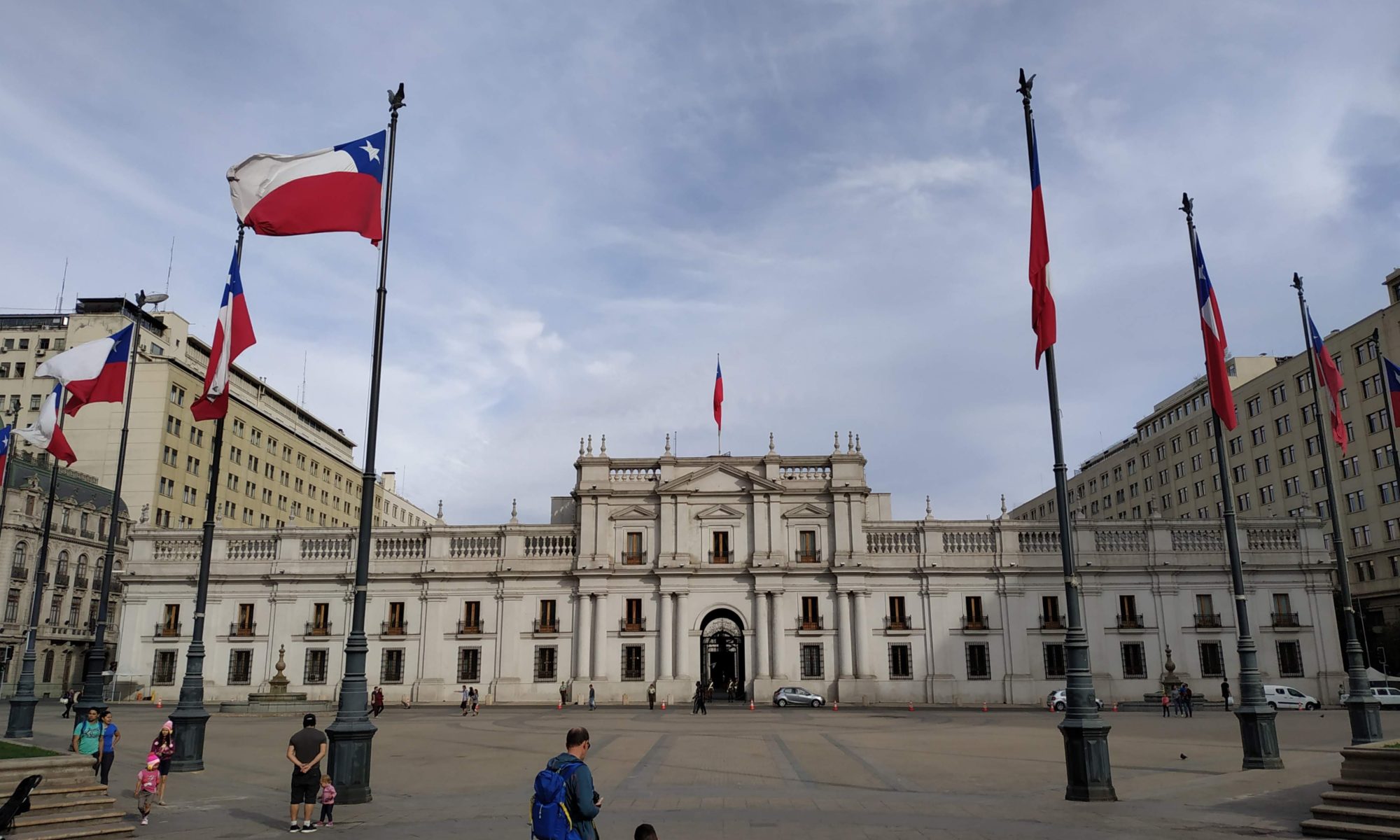
One Reply to “5 days in Santiago de Chile”